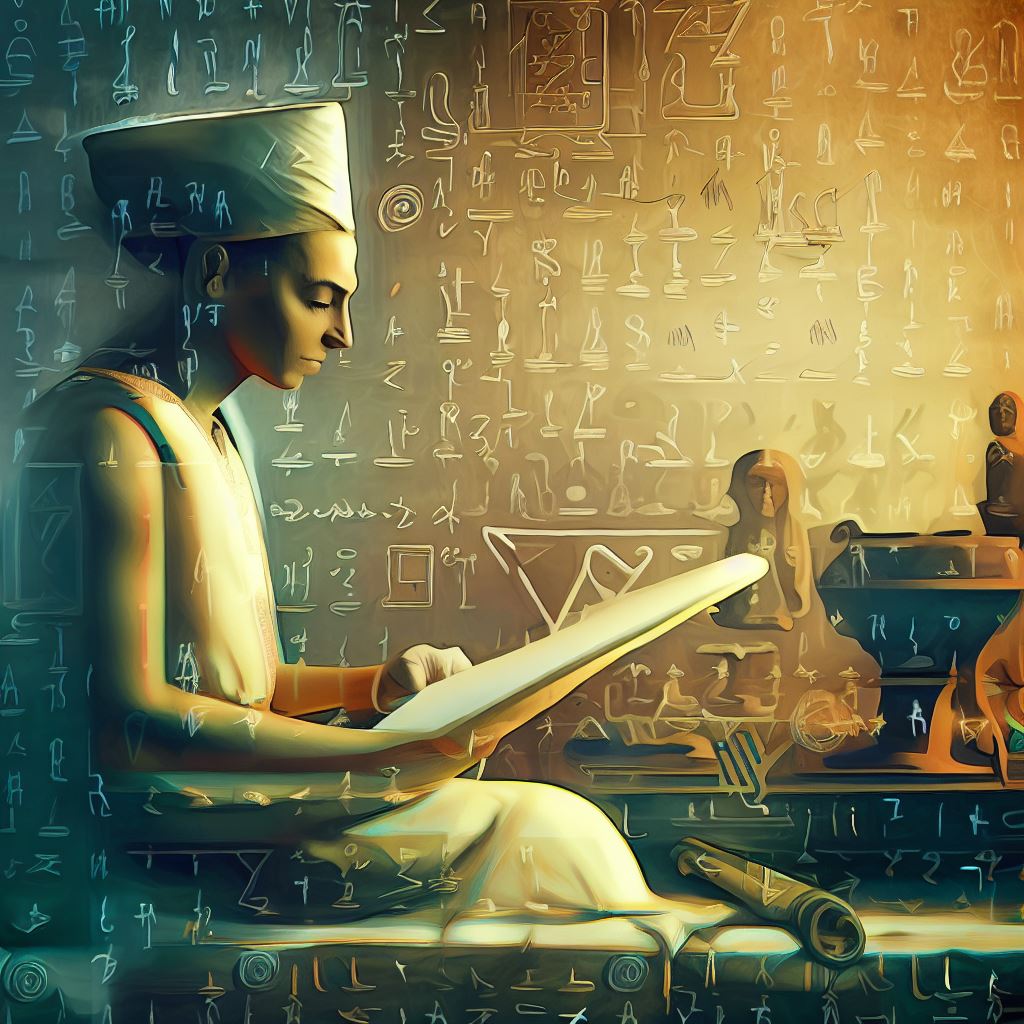An epistle is a formal and often literary letter, typically written for a specific purpose. Such as conveying information, giving instructions, or expressing thoughts and feelings. Epistles were often composed with care and attention to style and rhetoric.
At its heart, an epistolary novel is a narrative meticulously crafted from a mosaic of letters, diary entries, or other written documents. In stark contrast to traditional storytelling, where an omniscient narrator steers us through the plot, epistolary works grant characters the liberty to unveil their souls. They lay bare their innermost thoughts, emotions, and experiences through the artistry of the written word. This unique literary form extends to readers a coveted front-row seat to the lives of these characters, immersing them in a profoundly personal journey.
Defining epistolary in ancient Egypt
The prevalence of epistle writing in ancient Egypt could indicate its cultural and historical importance. These letters might have been used for various purposes, such as official communications, personal correspondence, or religious rituals. The statement implies that the act of writing letters in this epistle genre was widespread and customary in ancient Egypt. It was a common method of communication, and people in ancient Egyptian society frequently engaged in this form of written correspondence.
Additionally, ancient Egyptian epistles may have had a distinctive literary quality or style. They might have been considered a form of artistic expression, and the act of composing them could have been seen as a skilled endeavor.
A Glimpse into History
The roots of the epistolary novel reach far back into literary history. It emerged as a prominent form during the 18th century, captivating readers with its personal touch and immersive storytelling. From the passionate letters of star-crossed lovers to the journal entries of adventurers in distant lands, epistolary novels have left an indelible mark on the world of literature. By understanding this historical context, we can appreciate the evolution of storytelling through letters.
Diverse Literary Significance
What makes the epistolary novel truly remarkable is its ability to explore complex themes and characters. Authors harness the power of these written narratives to delve into the intricacies of human relationships, the depths of emotion, and the nuances of identity. Through this form, storytelling takes on a deeply personal and authentic tone. Readers connect with characters on a profound level, feeling as if they are reading personal letters from a friend.
Examples of Epistolary Novels
To fully grasp the art of the epistolary novel, let’s explore a few iconic examples:
“The Color Purple” by Alice Walker features Celie’s raw and unedited letters to God. Her language is a symphony of authenticity, free from the constraints of “standard” English. Readers resonate with her voice because it reflects the music of her own experiences.
“Gilead” by Marilynne Robinson employs the epistolary form to merge generational voices in a polyrhythmic discourse. It seamlessly weaves memory and history, truth and imagination, creating a unique narrative experience.
“Death on the Downbeat: An Orchestral Fantasy of Detection” by Sebastian Farr is a lesser-known example, told through affectionate letters from Detective Inspector Alan Hope to his wife. It explores a mysterious murder within the world of classical music, offering a unique perspective on the genre.
These examples showcase the diverse themes and genres that epistolary novels can encompass. It covers personal growth, historical exploration and even crime mysteries.
The Power of Perspective
One of the most compelling aspects of the epistolary novel is its embrace of diverse voices and perspectives. Each letter writer interprets events in a unique way, offering readers a multifaceted view of the story’s unfolding. This diversity enriches the narrative, making it an immersive literary experience where the characters speak directly to the reader.
Final thoughts
In closing, the term “epistolary” defines more than just a literary form; it encapsulates the authenticity of language, the richness of character, and the freedom of expression. It’s a celebration of diverse voices and a testament to the enduring power of the written word. As we explore this captivating genre, may we recognize the beauty of stories told through letters and appreciate the potency of words in shaping our literary landscape.








